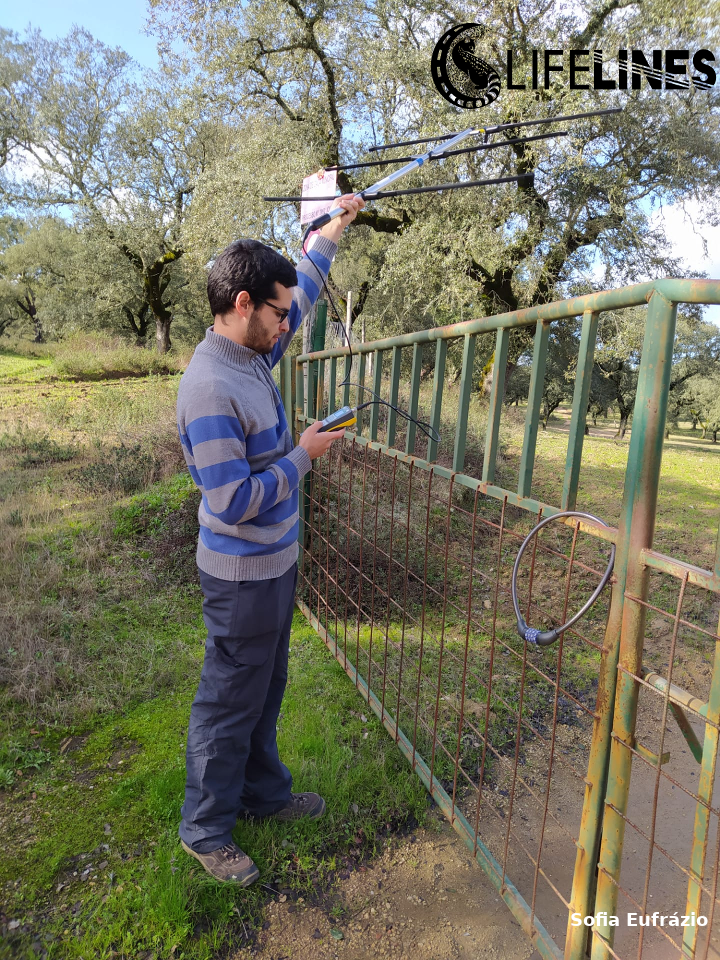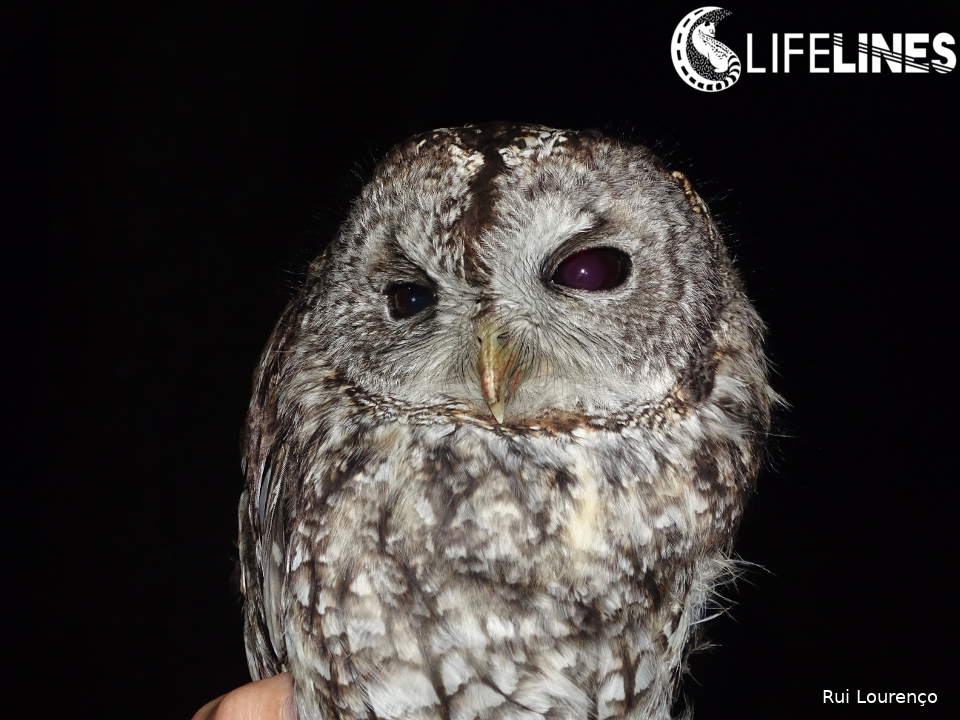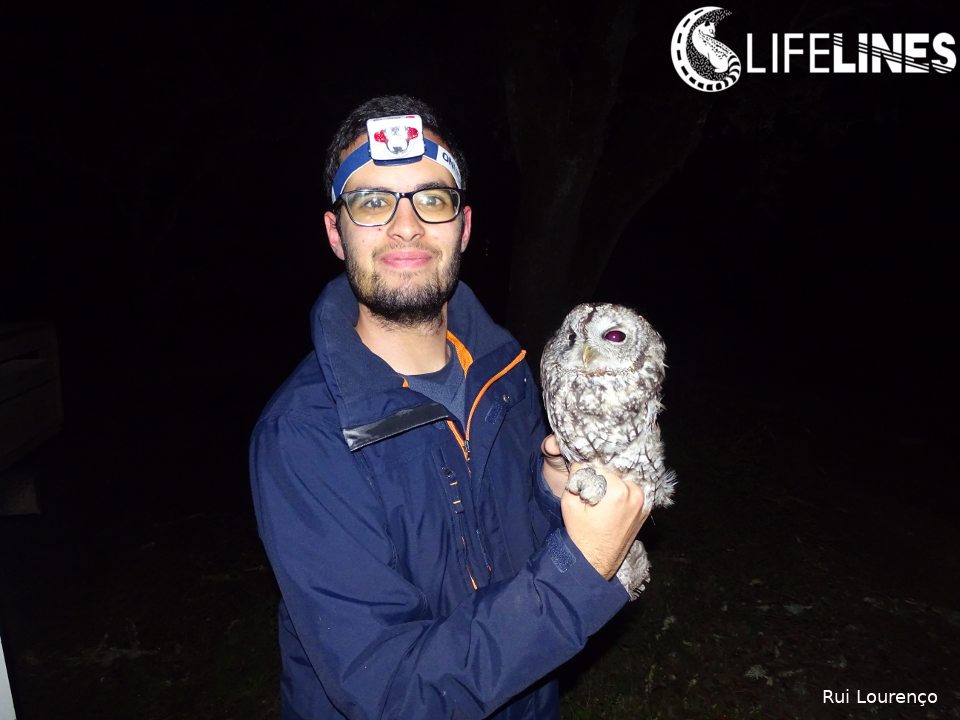Tawny Owl, where are you?
Visit to Sebastião da Gama Secondary School (Setúbal)
2020-01-17Field trip with students from Artistic School António Arroio
2020-03-02In the last weeks of November 2019, work on capturing and marking nocturnal bird of prey was started, within the scope of the LIFE LINES project. These works will extend throughout the winter, along the National Road EN4, between Montemor-o-Novo and Arraiolos, in order to understand if the patterns of distribution and movement of owls have changed near the road, after the measures implemented by the project.
Owls can move around in search for food, to look for partners, to breed or simply to patrol their territories. When these are located near linear infrastructures, such as roads, railways and power lines, they run the risk of being road killed, electrocuted or colliding. Therefore, it is very important to study the movements of owls to understand how individuals are affected by these structures created by humans, the extent of the associated risks and how we can reduce their negative effects, especially roadkills and the potential risks for drivers.
In the area of intervention of the project, the Tawny Owl is one of the species that suffers more impacts by linear infrastructures, being roadkilled. Thus this species constitutes one of the target species of the project to try to understand its movements near the roads. Through the telemetry technique using GPS tracking devices, we were able to obtain information about their movements and routes without disturbing the animals and then understand if the measures implemented in the region are having the expected results.



